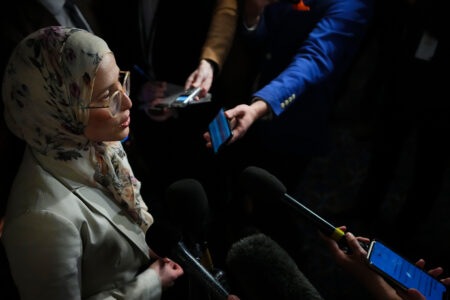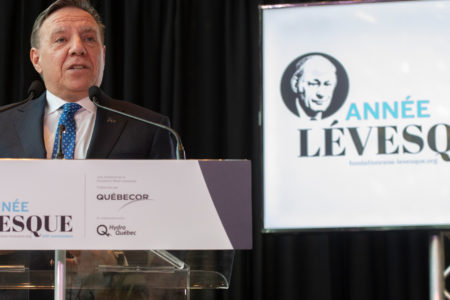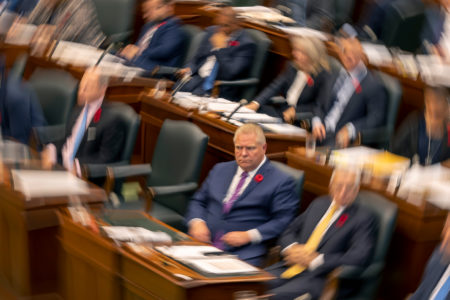
Informed citizens around the world can likely recall maelstrom generated by the publication of cartoons of the Prophet Mohammed by the Danish newspaper Jyllands-Posten in the fall of 2005. What followed went well beyond Danish Muslim organizations utilizing domestic courts to pursue (unsuccessfully) a defamation case. In fact, what might have been merely a domestic political debate over whether or not something was rotten in the state of Denmark quickly became a debate over whether or not something was rotten outside of Denmark when around the planet there were claims of press freedom (to reprint the cartoons), protests against the cartoons (both peaceful and violent) and a flurry of statements from presidents, prime ministers, monarchs and other officials variously defending free speech and non-violence, as well as respect for minorities.
The cartoon controversy had repercussions in Canada, particularly in Alberta. This paper uses this event to examine the concept of “reasonable accommodation” in relation to the Alberta experience. The discussion takes a four-fold approach. First, we address selected aspects of the global the context. Second, we consider “accommodation” as one type of practice which has historically characterized inter-group relations in Canada, especially, though not exclusively, Catholics and Protestants. Third, we address the growing emphasis on “reasonable accommodation” as a discourse governing relations with non-Christian minorities. Lastly, we return to the Danish cartoons to consider how their 2006 reprinting in two Calgary-based publications, the Western Standard and the Jewish Free Press, led to a case being filed with the Alberta Human Rights Commission, and the unfolding lessons this case illustrates about the value of deliberativeness before taking action on a “right,” as well as the value of civil dialogue.
For many Muslims today, visual representations of Mohammed are considered a form of sacrilegious idolatry. More to the point, many Muslims and non-Muslims found certain of the Jyllands-Posten cartoons offensive, if not racialized, for example, by depicting Mohammed wearing a bomb fashioned as a turban. These aspects are what account for UN Secretary-General Kofi Annan’s statement of February 2006 stressing that “freedom of the press should always be exercised in a way that fully respects the religious beliefs and tenets of all religions,” or British Prince Charles’s March 2006 declaration that “the recent ghastly strife and anger over the Danish cartoons shows the danger that comes of our failure to listen and to respect what is precious and sacred to others.”
In addition to so clearly highlighting the tension between respect for religious minorities and certain liberal democratic norms, particularly free speech, the Jyllands-Posten cartoons epitomize the intersection of the global and local when it comes to communication in the digital age, and to politics too. In such a global village, high-level responses did not end with Danish Prime Minister Anders Fogh Rasmussen’s defence of free speech and initial refusal to meet with ambassadors to Denmark from Muslim countries on this matter. As well, claims-making did not end with individuals and groups in Denmark, as we will show with respect to the province of Alberta.
The globalization of communications and politics so evident in the case of the Danish cartoons “introduces new complications into how “we” relate to “the other.” This is a question that all communities inevitably engage, including Canada. Recalling the intensity of constitutional debates in the 1980s and 1990s over Quebec as a “distinct society,” Aboriginal self-government and multiculturalism underscore that. This longstanding Canadian question of how to relate to “the other” has in the last couple of years come to be articulated in the question of what constitutes “reasonable accommodation” especially in relation to religious minorities. As we will suggest, while the globalization of communications and politics may complicate the context in which discussions over religious minorities emerge, there is still an important role to be played by Canadian institutions, politicians, citizens groups and individuals in respecting the rights and sensitivities of “the other.”
It is almost a cliché to say Canada is diverse given its foundation on settler-colonization by the French and British, its pre-existing indigenous population and repeated waves of immigration. Even the most cursory reading of Canadian history underscores that these groups have experienced power and resources differently, and relations with each other have therefore been characterized by conflict. Nonetheless, inter-group relation “religious, linguistic and cultural” have also been characterized by points of recognition and accommodation.
Consider the Royal Proclamation of 1763, which established the framework by which British administration of the North American territories would take place. The Royal Proclamation served to enforce British sovereignty, although at the same time Aboriginal tribes and land title rights were also acknowledged. Another historic example of accommodation would be the 1774 Quebec Act, which granted the freedom to practise the Catholic faith, and retained the French civil law and seigneurial landholding systems. While the Quebec Act did not say anything about the use of French, the appointed council (overseen by a colonial governor) allowed for Roman Catholics to hold office. Not least, with Confederation in 1867 and as outlined in the British North America Act/ Constitution Act, 1867, Canada adopted a federal system of government. The province of Quebec not only gained control over education and culture, but both French and English were to be the languages used in federal parliamentary debates and records. More recently, with the 1982 constitutional patriation, the Canadian Charter of Rights and Freedoms itself reflects several points of accommodation.
Thus Sections 16-22 claim French and English as the official languages of Canada and New Brunswick. Section 23 provides that official language minorities have the right to have their children educated in these languages if numbers are “sufficient to warrant” public funds. Section 25 holds that the Charter can not take away from Aboriginal rights, including as recognized by the Royal Proclamation of 1763. And Section 27 holds that the Charter will be interpreted in light of the multicultural heritage of Canada. Such points of accommodation are not restricted to the highest law of the land. Thus, for example, in light of the growing numbers of religious minorities, employers, schools and universities may well plan to accommodate non-Christian holidays in their scheduling; event managers may take into consideration dietary restrictions in food offerings; and entrepreneurs may devise ways of capitalizing on new markets by designing clothing, greeting cards or other products that accommodate different traditions. To flag the issue of “reasonable” accommodation however is to ask what is practical, realistic and sensible.
The term “reasonable accommodation” is one that has been used for many years, in a variety of national and institutional contexts, and with respect to a number of groups. In the United States, for example, it has been mobilized in relation to labour law. For instance, the federal Americans with Disabilities Act of 1990 calls on employers to make a “reasonable accommodation” (whether in building design, equipment or job duties) for qualified applicants or employees with known disabilities.
Within Canada as well, the use of the term “reasonable accommodation” is one that has surfaced for many years in relation to both religious and other groups in the context of employment, as well as human rights legislation and even case law. Thus as far back as 1978 officials in the Ontario Human Rights Commission used the term to describe settling a work-based dispute in favour of allowing the kirpan (ceremonial dagger worn by orthodox Sikh males) to be worn by a Sikh employee at an air conditioning company, and in 1981, in the context of discussing amendments to Ontario’s Human Rights Code, the term was used in relation to employment practices relating to individuals with disabilities. In 1984 the Alberta Human Rights Commission began to address the question of “reasonable accommodation” not only for relations between employers and employees but also landlords and tenants. The term was also even bandied about in the mid-1980s with respect to smokers and non-smokers confronting new bans on smoking in federal buildings.
The great catalyst for the contemporary popularization of the term “reasonable accommodation,” and in particular its association with religious groups, appears to stem from the March 2006 Supreme Court of Canada ruling on whether a Quebec schoolboy, who is an orthodox Sikh, could wear the kirpan to school. Initially in 2001, the school board had suggested that a “reasonable accommodation” was that the boy could wear the kirpan provided it was concealed under his clothing; however the governing board of the school refused to ratify this on grounds that it violated a prohibition against students carrying weapons. The unanimous decision of the Supreme Court stressed that the refusal of the school board to agree to a reasonable accommodation measure violated the religious freedom guaranteed by the Canadian Charter of Rights and Freedoms as well as the Quebec Charter of Human Rights and Freedoms.
This particular case, and the use of the term “reasonable accommodation,” was widely reported, and subsequently helped to frame a series of Quebec media stories, partisan debates and political actions on a range of everyday practices that were deemed to exemplify the inherent tension between dominant social values and/or rights and those of religious minorities. Thus on February 3, 2007, Liz Ferguson of The Gazette (Montreal) wrote a one-year chronology of the province’s controversies surrounding “reasonable accommodation.” This chronology highlighted pregnant Muslim women who did not want to be seen by male doctors in Montreal-area hospitals; a Montreal YWCA installing frosted glass windows so that a Hasidic Jewish congregation would not see women exercising; the offering of prenatal classes excluding fathers in deference to expecting mothers who are Sikh, Hindu and Muslim; and Mario Dumont (Action démocratique du Québec) seeking a ”reasonable accommodation” to say Merry Christmas/Joyeux Noel at the National Assembly’s final session on December 14, rather than the more neutral Seasons Greetings/Bonnes fêtes.
Not least, the year included the town of Hérouxville making national and, given the global village, international headlines by weighing in on the debate by publishing a code of conduct which included banning the hijab (the headscarf some Muslim women wear) except on Halloween, stressing boys and girls can swim together and can not bring weapons to school, and that men and women have equal rights.
With all this occurring in the runup to the March 2007 provincial election, it is perhaps not surprising that Premier Jean Charest chose to form a commission to look into the question of (reasonable) accommodation, naming as its heads political philosopher Charles Taylor and historian Gérard Bouchard. As articulated by Bouchard, in a June 2007 communiqué, ”In a word, it is the management of diversity, in particular religious diversity, that is at the heart of the problem we are examining.” It is likely that the commission will contextualize its findings in relation to the legacy of the Catholic Church and growing secularism since the Quiet Revolution, as well as the unresolved national question.
As the Bouchard-Taylor Commission is scheduled to hear from the Quebec public between September and December 2007, it can also be anticipated that the framing of the debate on reasonable accommodation with regard to religion will be with us for some time. While the focus on religious groups and/or religious minorities may span many traditions, we nonetheless would stress that the focus on religion is reflective of the growing attention given by governments and publics across Western countries to religion (in particular Islam) and religious minorities (in particular Muslim immigrants and their descendants) since the events of September 11, 2001. It is therefore important to consider that domestic debates on “reasonable accommodation” both draw from and may even contribute to this charged international environment. Although the findings of the Bouchard-Taylor Commission will not be released until 2008, we suggest that much can be learned from the recent case of Alberta about the value of civil discourse in relation to religious diversity.
The reprinting of the Danish cartoons in February 2006 in two Calgary-based publications illustrates the reciprocal influence of the global and local. Ezra Levant, the editor of the Western Standard, justified his decision to republish the cartoons by invoking courage and the right to free speech. Richard Bronstein, publisher of the Jewish Free Press, justified his decision on grounds of seeking to educate the readership about the protests that swept the Muslim world following the original publication of the cartoons.
To Muslims in Calgary and in its sister city, Edmonton, as in Europe and elsewhere, some of the cartoons were deeply offensive. While the furor created by the cartoons at the global level was massive, the response of Canadian Muslims to the republication of the cartoons in the Jewish Free Press and the Western Standard was resolute but civil.
The cartoon controversy in Calgary saw many commentaries, pro and con, appearing in the Canadian media. For example, Marvin Kruz, honorary legal counsel of the League for Human Rights of B’nai Brith Canada, writing in the Globe and Mail (May 1, 2006), was critical of the use of human rights commissions to deal with matters such as the cartoon controversy. In a similar vein, Alan Borovoy, head of the Canadian Civil Liberties Association, writing in The Calgary Herald (March 16, 2006), was critical of such complaints to human rights commissions and argued that human rights laws needed to be changed.
On the other hand, the Canadian Jewish Congress, in a statement issued on February 9, 2006, stated that “we are saddened by a situation that has gotten entirely out of hand. The decision by all those who chose to publish the cartoons is inexcusably provocative, insensitive and disrespectful of Muslim believers…We commend Canada’s Muslim community for the civility with which it has protested and those media who have decided not to republish the cartoons…”
Prime Minister Stephen Harper, in a statement issued on February 16, 2006, also praised the civility of the Muslim community: “Free speech is a right that all Canadians enjoy; Canadians also have the right to voice their opinion on the free speech of others. I regret the publication of this material [the cartoons] in several media outlets. While we understand that this issue is divisive, our government wishes that people be respectful of the beliefs of others. I commend the Canadian Muslim community for voicing its opinion peacefully, respectfully and democratically.”
That the cartoon controversy in Alberta unfolded in a peaceful manner was further aided by the fact that Muslim organizations had institutionalized mechanisms for voicing their complaints, and were also afforded an opportunity for civil dialogue. Thus, while the criminal charges against the two publications filed with Calgary police were unsuccessful, the formal complaints filed with the Alberta Human Rights Commission created an avenue for conversation.
In the matter of criminal charges filed with police, on grounds that the publication of the cartoons incited hate mail directed at Muslims, the Calgary Chief Crown Prosecutor stated that the Criminal Code requires that there be an intent to incite hatred against a specific group, which was not there in this case. Therefore, no charges would be laid against the two Calgary publications for publishing the cartoons.
With reference to complaints filed with the Alberta Human Rights Commission, it is worth noting that the commission’s work is premised on accommodating individuals and groups in accordance with human rights legislation. According to an interpretive bulletin, the “goal of accommodation is to enable equitable participation” in any of the areas protected by the Human Rights, Citizenship and Multiculturalism Act. The complaint process involves conciliation at an early stage, whereby a conciliator appointed by the Alberta Human Rights Commission attempts to help the complainant and the respondent to reach a settlement. If this fails, then a human rights investigator is assigned to the case.
Significantly, the Alberta Human Rights Commission’s approach presents an opportunity for civil dialogue between the complainant and the respondent. In this case, the Jewish Free Press settled the complaint by agreeing to publish an op-ed piece explaining why Alberta Muslims were outraged over the cartoons. An article to this effect, written by the Edmonton Council of Muslim Communities, appeared in the Jewish Free Press on May 4, 2007, and is posted on the Council’s Web site. However, no mutually acceptable settlement has been reached with the Western Standard and the case is still before the Alberta Human Rights Commission.
Three important lessons are learned from the Alberta experience. First, freedom of the press is not necessarily a licence to print anything that an editor or publisher wants. Freedom of the press is frequently balanced by other considerations such as responsibilities to respect others’ sensitivities. In this post-9/11 era, and in an era where communication is global, many Muslims feel besieged and under attack and, hence, showing respect for what they deeply believe in and for what they regard as sacred can go a long way toward accommodating diversity.
The second lesson learned is that it is critically important in controversial situations to have avenues for civil dialogue and for accommodating diversity in a serious and equitable manner. Muslim groups in Alberta were able to pursue civil dialogue and legitimate avenues for redressing their grievances. While it is not always a sure bet that a complainant will win, the existence of an institutionalized mechanism for voicing complaints means that society is serious about its desire to accommodate diversity.
Finally, as we have suggested, accommodation is a Canadian way that has deep historical roots, and moreover the question of how “we” relate to “the other” as groups, as citizens or as individuals is one that is unavoidable and that each of us navigates on a daily basis in a variety of settings. While recent developments internationally, in Quebec and in Alberta have brought religious differences to the fore, this is only but one dimension of difference. It seems to us then that any discussion of what “reasonable accommodation” is needs to both start and end with serious consideration of what makes for a civil society.







